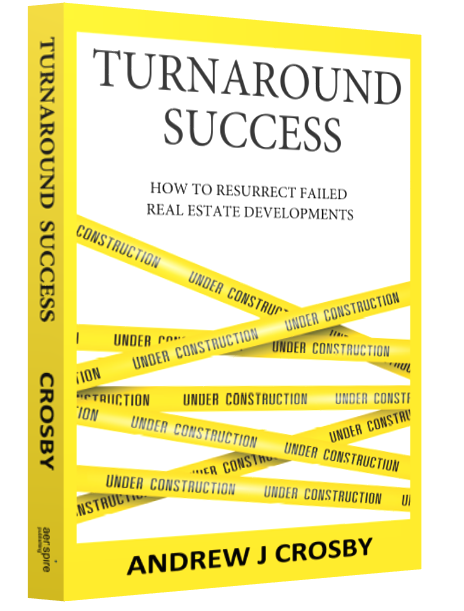Over the years, I have worked in three different developer design environments:
- Architectural design and documentation completed by external consultants.
- Architectural design and documentation completed by internal staff.
- A mix of both, including freelance contractors.
The first thing to consider is when it is a one-off project. Unless it is a multi-year development, there is probably little point in hiring and managing an in-house architectural design team. There are set-up costs and your ability to attract good staff (who want a career path, not a one off) will be severely hampered. The possible exception is a potential prize-winning project — where working on it is an attractive status symbol on an employee’s résumé. However, even in that situation you would probably look to contract out to individuals for a fixed term than to in-house them.[1]
Assuming the project is of sufficient size or nature that recruitment won’t be a problem, then it’s a relatively simple equation. First calculate these internal costs:
- Salary and potential bonuses, including annual increases
- Office space
- Software licensing and requirements
- Managing the employee — is this you? Do you have time?
- All the admin, HR and employment law
Then, compare those costs to what an external architectural firm will charge you. More than likely you will save money — if you can recruit the right people. However, there are intangible qualities and pitfalls that need careful consideration.
- Capability. Can the people you hire undertake all the architecture that is required? From concept to developed design to specifications to working drawing documentation and BIM modeling. In a professional architectural practice, the concept is done by a senior architect, the developed design by an associate and the working drawings by juniors or specialist CAD technicians (i.e. they may not even be architects). An option is to hire external architects for conceptual design and in-house consent and working drawings.
- Control. You lose control by outsourcing and gain it by in-housing. Being able to keep tabs on costs and delivery program is another reason to in-house consent and working drawings.
- Creativity. Your project is not likely to attract the sort of creative candidate who is best suited to a high-end architectural practice. This doesn’t matter if your product is relatively benign but can become important if your product depends on spectacular design.
- Mentor. Are you, as developer, a closet architect? Many think they are. Do you have the flair and artistic inclination to drive a somewhat less creative architectural employee to the result you want? If so, then you may not need the all-out creative type in the first place. Be realistic about your abilities though!
- Network. An architectural practice has established relationships with engineers, town planners and other consultants that you may want to tap into. Especially if your project is in a new market where you don’t have those contacts yourself.
- Capacity. Often touted are the benefits of hiring an architectural firm because they bring a wealth of experience, across disciplines and across people, to your job. In my experience, it is the individuals that are of prime importance and any beneficial cross-fertilization of ideas is secondary. However, on several occasions, I have had a situation requiring a specialist and it was easy for the architectural practice to throw another expert onto that problem. On one job the third-party landscape architect had gone AWOL, so we asked the current architectural practice if they could oblige with landscape signoff inspections.
- Quality. With an inhouse architectural resource you must make sure you have suitably experienced managers to check and double check drawings. You also must think about the capability of in-house staff to do onsite construction inspections.
- Fees. External architect’s fees may be exorbitant, but you should also be able to obtain a fixed fee agreement, capping costs. And from there on they will be under pressure to perform to meet your budget. The corollary though, is if they are over their own internal budget, they may not be throwing the right resource onto your job in the latter stages.
- Insurance and liability. Running architecture in-house means you are responsible for the output of your architectural staff. If you use an external firm, then they have the responsibility and the professional indemnity insurance to go with it. In practice though, as developer, you will be one of the last ones holding the baby. It is often difficult getting much out of other’s professional insurance without an expensive lengthy legal battle.
The above scrutiny also applies to other design professions, like engineers. But liability is the main reason why I wouldn’t consider in-housing engineering functions. For items like fire, acoustic, structural, civil infrastructure, services, surveying and geotechnical engineering the inherited liability — and lack of ongoing work — makes it less likely to be worth in-housing. Of course, if your background is engineering (so you know how to deal with the risks), and the work is substantial enough to justify full-time internal resource, then by all means consider it.
Town planning is a design
profession where it might be cost effective to in-house this resource, but you
would have to be a large organization or project to justify dedicated town
planning staff (the same applies to most specialist engineering functions). It’s
unlikely you can fill someone’s day, every day, on a single project. In
addition, it may be counter-productive. Often in the eyes of the people you are
trying to convince to get zoning changes or planning dispensations, an external
consultant will appear more at arm’s-length. External town planners also absorb
valuable experience from all their different clients’ work. Since they are
dealing with multiple projects they can (usually) establish more consistent
relationships with local authority planning departments.
[1] Although that gets confusing in reality, as many contractors are essentially employees if this is their only client.

Download Xpect 2 Connect profile + references for your next recruitment
http://aenspire.com/xpect/xpect2connect.pdf

Buy the book from Amazon: https://www.amazon.com/dp/1790590884?
